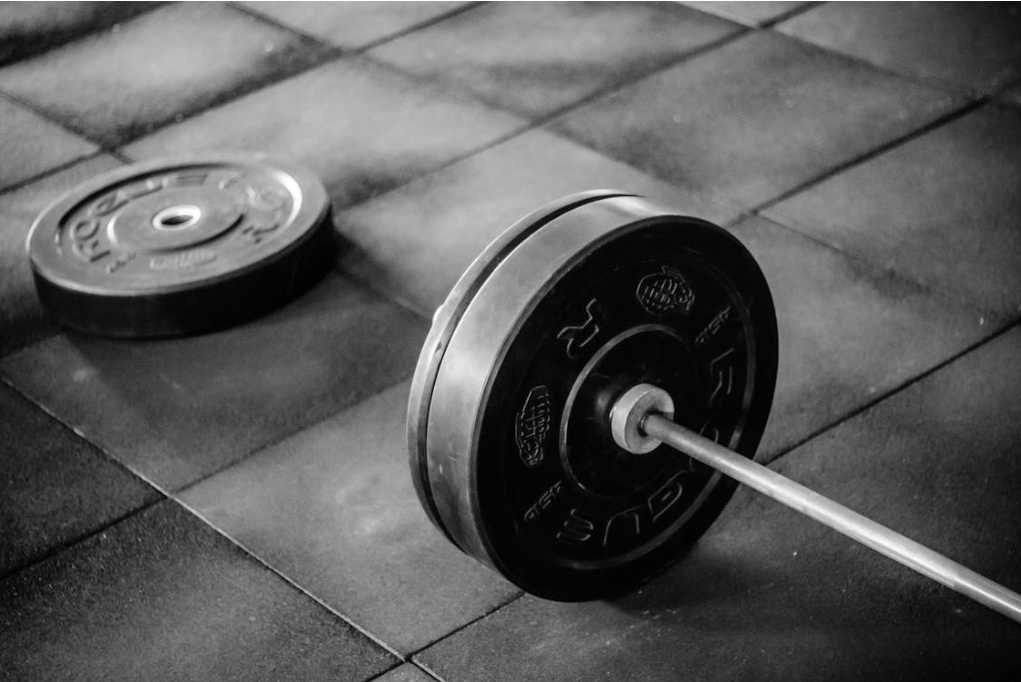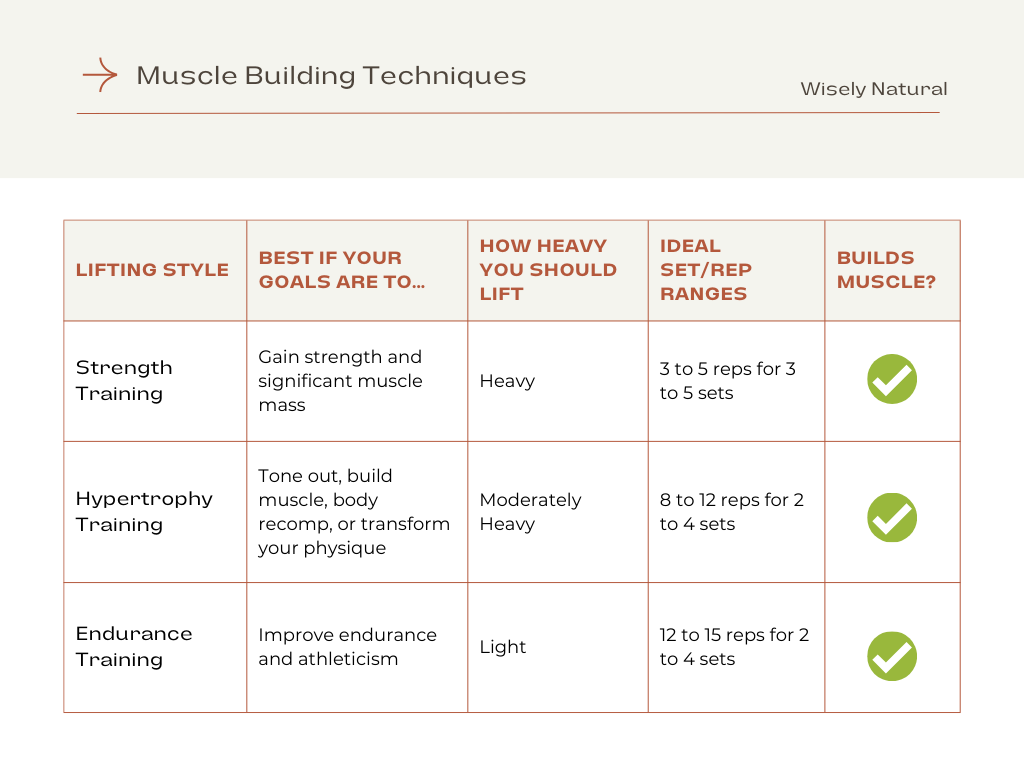
If you’re starting a weightlifting routine, you’ve most likely heard that to reach your goals, you need to lift heavy.
However, when people say lift heavy, there are quite a few questions that go unanswered.
For example, what weight is even considered heavy? And how heavy is right for you?
The best way to answer these questions is based on you and your individual goals in the gym.
In this post, I want to talk about how heavy you should be lifting to maximize your workouts. As well as achieve your individual fitness goals.
In this post you’ll find:
Should you really always be lifting as heavy as possible?
Depending on who you are and what your gym goals are, how heavy you should be lifting will vary.
Think about it, you wouldn’t see a powerlifter training the same way as a bodybuilder.
They’d both likely be lifting different amounts of weights, and in different ways.
That’s because they both have very different gym goals that they’re striving for.
One’s goal is to train for strength and power and the other’s goal is to train for hypertrophy and physique.
They’re both still lifting heavy and training intensely, however they do it in different ways.
Because of this, it’s not realistic to say everyone should always be lifting as heavy as possible in the gym.
If you were to do that, you’d be lifting close to your one rep max, and doing very few reps.
And this would be perfect, if your goals are to gain maximum strength.
However, for the majority of people in the gym, our goals aren’t to be as strong as possible and max out on every lift.
Rather than that, most of us want to become healthier, more active, gain muscle and lose fat, body recomp, gain an athletic physique, and so on.
And, to achieve each of these different goals, you’d need to be lifting a little differently.
Because of this, we’re going to do a deeper dive into the weight you should be lifting and how you should be lifting it to achieve these goals.
Not everyone should be lifting the same way in the gym
Almost every single one of us in the gym has different goals that we’re trying to achieve.
Since our fitness routine directly reflects our goals, each of us will also have different workout routines.
Meaning a different combination of exercises, different weights we lift, a different number of sets/reps we do, and so on.
Your goals are a huge factor in determining how intensely you should be training, how many reps you should shoot for, and how heavy you should lift.
On top of that, everyone in the gym has different body capabilities.
Because of this, one weight that works for one person might not work for the next.
And, just because one person’s body reacts to a certain weight, doesn’t mean everyone else’s will react the same way.
Because of this, there’s no one size fits all routine that will work for everyone.
That’s why it’s very important to determine your goals, and what style of lifting works best for you to achieve these goals.
How heavy you should be lifting to achieve your gym goals
Now that we’ve covered how the way that you lift should correlate to your goals, I want to dive deeper into how you should lift to achieve your goals.

How heavy you should lift to gain strength
If your main goal in the gym is to lift heavier, rather than change your physique, then your main focus should be on gaining strength.
What I mean by this is if your goal is to gain muscle mass for the purpose of setting new personal records, rather than for the purpose of changing your body composition.
As a result, if you find yourself in this category, then you should always be lifting heavy weight as part of your training.
Now’s the time when you’d want to be lifting as heavy as possible, like we talked about earlier.
To do this, you’d want to routinely be training your muscles close to their max.
Because you’re lifting heavy and close to your max, you’ll most likely hit failure in a very low rep range.
With this low rep range, you’ll be training your muscles to generate power and lift heavy weight, instead of develop your physique and tone out.
You’ll gain more bulky, power generating muscle, and less lean, toned out muscle.
How heavy you should lift for hypertrophy (muscle gaining)
If you’re goals in the gym are to build muscle, body recomp, or slim down, then you’d most likely want to lift for hypertrophy.
Hypertrophy training means you’re training to build muscle and build your physique, rather than training for strength and power.
You focus less on how much you can lift and your developing your physique.
How heavy you should be lifting for hypertrophy training
For hypertrophy training, you want to be lifting between 60 to 80 percent of your max.
This means you’re not lifting as heavy as you can, but you’re not lifting light either.
You’re lifting about three quarters of the way to your max, at a weight where you hit failure within a reasonable rep range.
The reason for this is because you want your muscles to be stimulated long enough and intensely enough, so that they can grow into lean muscle mass.
How much weight you should lift for endurance training
If you’re someone who’s a runner, an athlete, or anyone else looking to become more physically fit, then you should be training for endurance.
As a result, if your main goal is to improve your endurance, then you would want to be lifting light weight.
The reason for this is because your goals aren’t to build muscle and achieve a certain physique or gain huge amounts of power or strength.
Instead, what you’re really focused on is training your muscles to perform a certain way.
Because of this, you want your weightlifting workouts to mimic the way you want your muscles to perform.
And in this case, you want them to train to endure cardio, rather than heavy weights.
Think about it, you don’t usually see a lot of long distance runner with huge amounts of muscle mass.
That’s because they’re not in the gym maxing out on all of their lifts.
Instead, they’re lifting lighter and doing a high amount of reps.
Doing this, they train their muscles to endure long periods of cardio and conserve energy.
As a result, by lifting lighter in a high rep range, you can train your muscles to endure a cardio style of training. Or what we call endurance training.
Ideal rep ranges based on your gym goals
I talked more generally about how many reps you should do for each weight you’re lifting, but I want to talk about the correct rep ranges a little more specifically.
Remember, no matter what weight you’re lifting at, you should always be training intensely enough to stimulate muscle growth.
However, because the weight you’re lifting at varies depending on your goals, so will how many reps you need to do to stimulate enough growth.
To know you’re doing enough reps to stimulate growth, you should always struggle to complete your last few reps of every set.
Ideal rep ranges depending on your gym goals:
Strength Training:
Because you’re lifting heavy and close to your max, your goal rep range will be very low.
For this style of training, you’d want to be doing 3-5 reps and 3 to 5 sets of every exercise.
Hypertrophy Training:
With hypertrophy training, you’d be lifting at 60 to 80 percent of your max.
Because of this, you’d want to hit failure in a slightly higher rep range than with strength training.
For hypertrophy training, you’d want to hit failure in the range of 8 to 12 reps for 2 to 4 sets.
Endurance Training:
Since you need to lift lighter to train for endurance, you would be hitting failure in the highest rep range.
For endurance training, you’d want to be doing 12 to 15 reps, for 2 to four sets.
Let’s sum things up in a table
To make things easier, I created a table comparison for all three lifting techniques.
This table basically sums of the “big ideas” of all three muscle gaining training styles.
Referring back to this is an excellent way to give yourself a quick refresher, just incase you forget any of the details.
That way, you can easily choose the right amount of weight, number of sets/reps, etc, based on your lifting style and your goals.
The top three muscle building techniques:

Your weightlifting goals may change, and so should how heavy you lift
It’s important to keep in mind that throughout your fitness journey, your goals have a high chance of changing.
There’s nothing wrong with this! Depending on where you are in your journey, you’ll most likely have different goals at different times.
Because of this, your routine should also change with your goals.
It’s unrealistic to say that your routine will remain the same throughout your entire fitness journey, despite your goals changing.
If you didn’t change your routine accordingly to your goals, you’d make it nearly impossible for you to meet your specific goals!
As a result, as your goals change, your routine and how heavy you lift should change with them.
Takeaways
As a weightlifting women in the gym, it can be hard to know how heavy you should be lifting.
However, the best way to determine how you should be training is based on your specific gym goals.
That’s why it’s so important to do a deep dive into how your training correlates to your goals and how you should be training to meet these goals.
Then, you can start implementing these training styles into your routine and start maximizing your results and progress.
More posts on women’s weightlifting:
How to stay consistent with your weightlifting routine